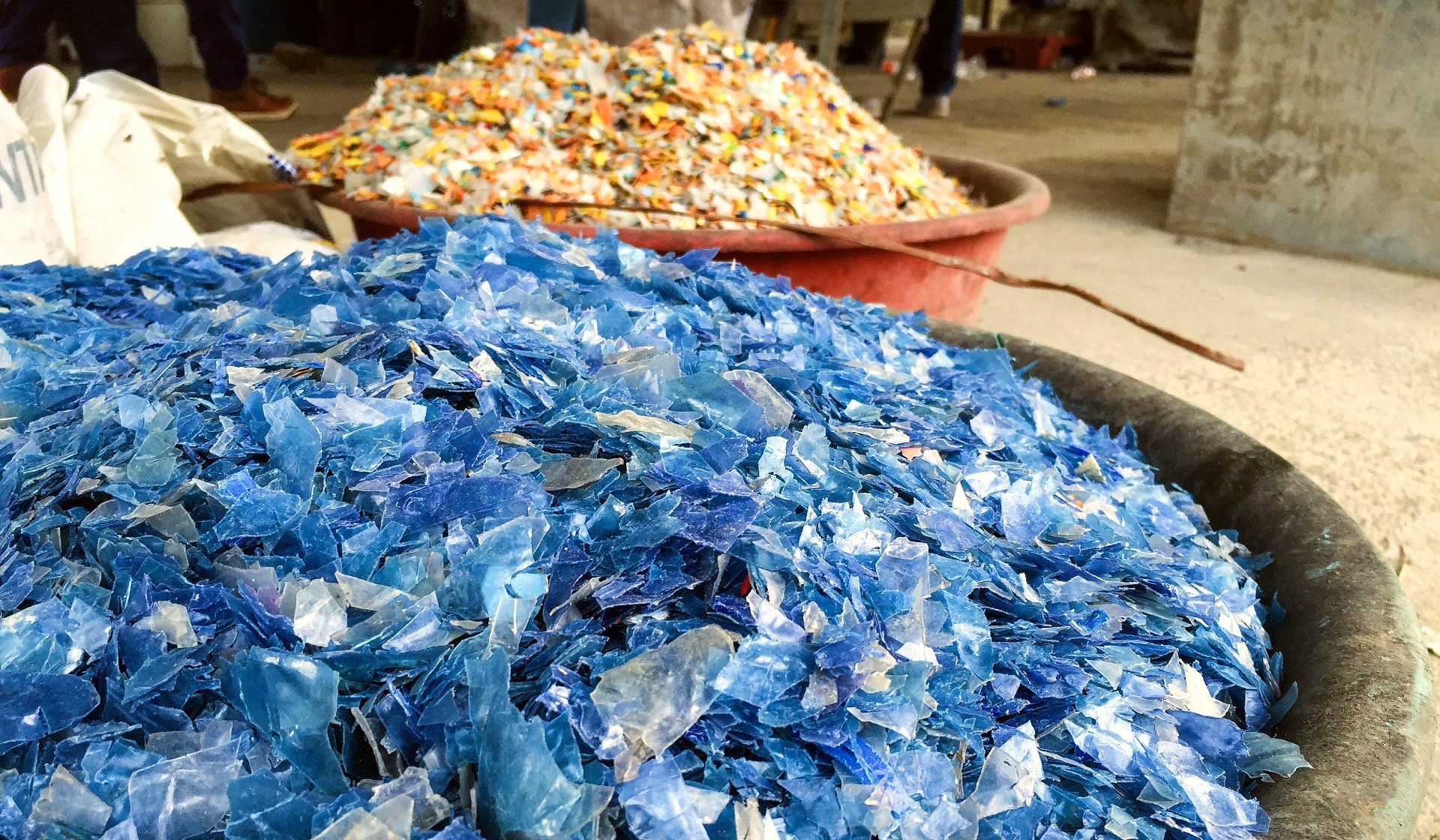Although the fabric is considerably better for the planet than its virgin counterpart, it still generates fibrous micro-plastics which persist in the environment and never degrade.
Green or greenwashing? This is the question environmentalists have begun asking with regards to recycled polyester (rPET), the man-made fabric with an obviously smaller carbon footprint than its virgin counterpart, but one that’s still far from sustainable.
Currently, polyester accounts for more than 55% of all fibres used in the textile and apparel industry, a figure that Greenpeace predicts will increase dramatically by 2030. It’s a material used liberally within the realm of athleisure, due to the ever-growing number of consumers seeking stretchier, more resistant clothing – particularly during a period of lockdown in which we could either work out or wind down.
Of course, a significant issue lies in the fact that polyester is typically derived from petroleum-based ingredients, which isn’t biodegradable and puts huge pressure on dwindling finite resources. But does recycling it solve the problem or simply contribute further to the climate crisis?

In 2017, non-profit organisation Textile Exchange challenged over 50 renowned companies (from H&M and Gap to IKEA and Adidas) to up their use of rPET by 25% before 2020. An irrefutable success, those involved were not only able to meet the goal two years prior to the deadline but exceeded the target percentage by 11%. Encouraging others to follow suit, the initiative now has close to one hundred major brands under its belt, a feat that led the non-profit to forecast 20% of all polyester to be recycled within the next decade.
‘Taking plastic waste and turning it into a useful material is very important for humans and our environment,’ says Karla Magruder, board member of Textile Exchange. ‘If you look at life cycle assessments, rPET scores significantly better than virgin PET.’ This is because it’s almost equivalent in terms of quality, but its production requires 59% less energy.
Additionally, recycled polyester curbs discards, reduces toxic emissions from incinerators, and eliminates the need to extract natural gas and crude oil, thereby lessening the industry’s inherent dependence on fossil fuels to manufacture staple fabrics.




















